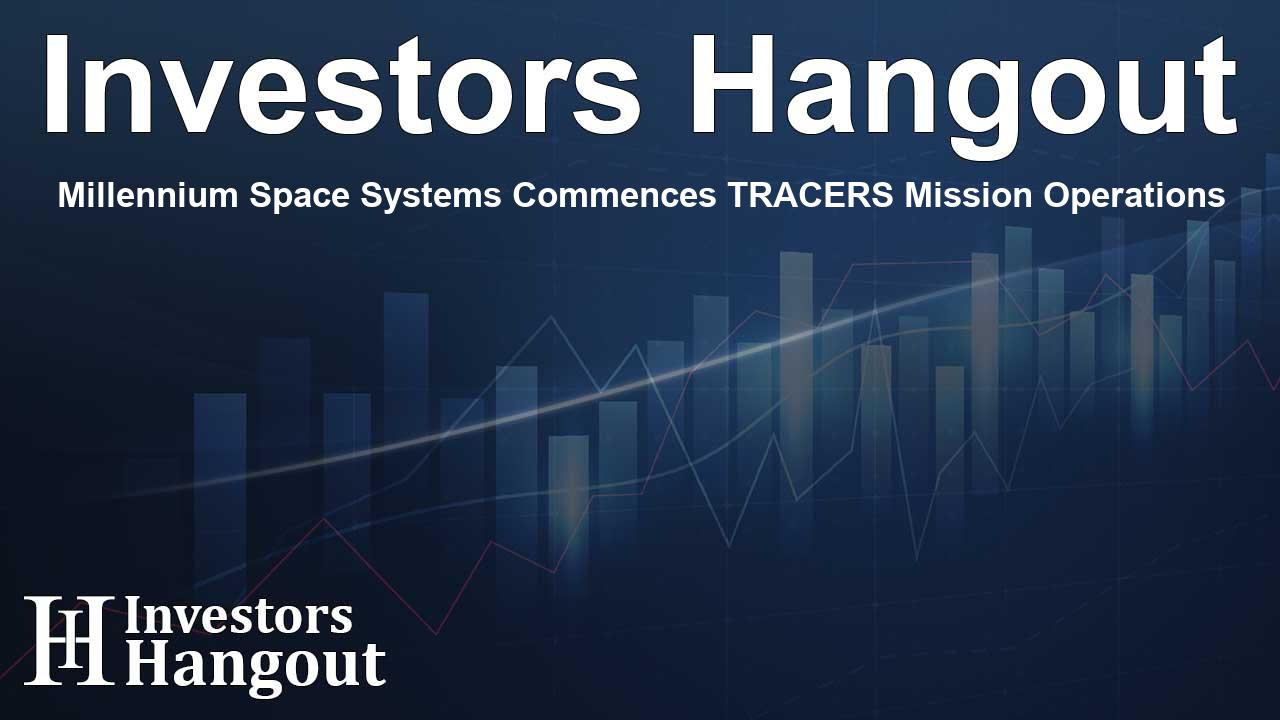Millennium Space Systems Commences TRACERS Mission Operations

Millennium Space Systems Launches NASA's TRACERS Mission
Millennium Space Systems, a division of Boeing, is excited to announce the successful launch and commencement of on-orbit commissioning for NASA's Tandem Reconnection and Cusp Electrodynamics Reconnaissance Satellites, known as the TRACERS mission. These innovative satellites were designed, built, and tested at the company's state-of-the-art facility, paving the way for significant advancements in our understanding of space phenomena.
Inside the TRACERS Mission
The TRACERS mission represents a major step forward in space research. The two identical spacecraft will work collaboratively to monitor the interaction between the Sun's magnetic field and Earth's magnetosphere. This vital research aims to enhance our comprehension of space weather—how solar activity affects the environment around Earth. Understanding these interactions is crucial, not just for scientific knowledge, but also for the future of our commercial and national space systems.
Design and Production Expertise
Millennium’s expertise shines through in the development of these spacecraft. The company has meticulously overseen every stage of the mission, from design and production to extensive testing conducted in their Small Satellite Factory. The launch marks a significant achievement whereby Millennium showcases its commitment to supporting cutting-edge scientific explorations and providing robust solutions in aerospace technology.
Collaboration with NASA and Partners
According to Tony Gingiss, CEO of Millennium Space Systems, "Millennium has enabled TRACERS through design, production, and now into launch and mission operations. We are thrilled to be part of this important NASA mission, enabling critical advances in heliophysics science which will help improve our understanding of space weather, ultimately benefitting commercial and national space systems." Such collaborations are pivotal, joining forces between Millennium, NASA, the University of Iowa, and the Southwest Research Institute to ensure operational success.
Operational Goals and Expectations
Now that the TRACERS spacecraft are in orbit, they will collect invaluable data that could redefine our comprehension of the Sun-Earth connection. The mission’s objectives are centered on studying magnetic reconnection, a complex process where charged particles in the atmosphere interact. This research could lead to improved predictive capabilities with respect to space weather events, ultimately protecting technology systems on Earth.
Future Impacts of TRACERS
The potential impacts of the TRACERS mission extend far beyond academic inquiry. This mission is a stepping stone toward enhancing our preparedness for future space weather challenges. As solar storms can disrupt satellite operations, impact electrical grids, and interfere with communication systems, understanding solar dynamics is critical for safeguarding our infrastructure on Earth.
Conclusion
With the TRACERS mission, Millennium Space Systems is not only advancing scientific knowledge but also contributing to the overall safety and resilience of our technological systems against the challenges posed by space weather. As the mission unfolds, ongoing data collection and analysis will ensure that continuous improvements in operational readiness and predictive models are achieved.
For more information about Millennium Space Systems and their groundbreaking work, please explore their official website and stay updated on the progress of the TRACERS mission. This mission exemplifies the intersection of advanced technology and essential scientific inquiry aimed at expanding our understanding of space.
Frequently Asked Questions
What is the TRACERS mission?
The TRACERS mission involves two satellites designed to study the interactions between the Sun's magnetic field and Earth's magnetosphere, focusing on how solar activities influence space weather.
Who is responsible for launching the TRACERS satellites?
Millennium Space Systems designed, built, and launched the TRACERS satellites as part of their collaboration with NASA.
What are the key goals of the TRACERS mission?
The key objectives are to understand magnetic reconnection processes and their impacts on space weather to better predict and respond to solar activity's influences on Earth.
How does the TRACERS mission benefit commercial and national systems?
By enhancing the understanding of space weather, the TRACERS mission will help protect technological systems and improve resilience against solar disruptions.
Where can I find more information about the TRACERS mission?
For detailed insights, you can visit the official website of Millennium Space Systems for updates and announcements regarding the TRACERS mission.
About The Author
Contact Logan Wright privately here. Or send an email with ATTN: Logan Wright as the subject to contact@investorshangout.com.
About Investors Hangout
Investors Hangout is a leading online stock forum for financial discussion and learning, offering a wide range of free tools and resources. It draws in traders of all levels, who exchange market knowledge, investigate trading tactics, and keep an eye on industry developments in real time. Featuring financial articles, stock message boards, quotes, charts, company profiles, and live news updates. Through cooperative learning and a wealth of informational resources, it helps users from novices creating their first portfolios to experts honing their techniques. Join Investors Hangout today: https://investorshangout.com/
The content of this article is based on factual, publicly available information and does not represent legal, financial, or investment advice. Investors Hangout does not offer financial advice, and the author is not a licensed financial advisor. Consult a qualified advisor before making any financial or investment decisions based on this article. This article should not be considered advice to purchase, sell, or hold any securities or other investments. If any of the material provided here is inaccurate, please contact us for corrections.
